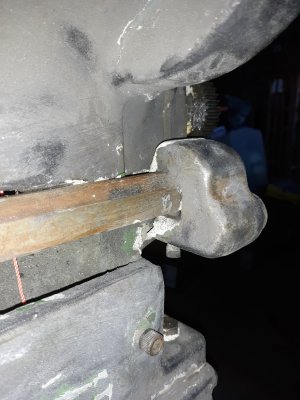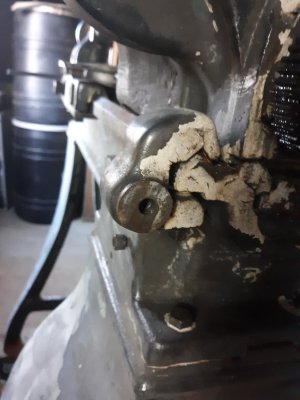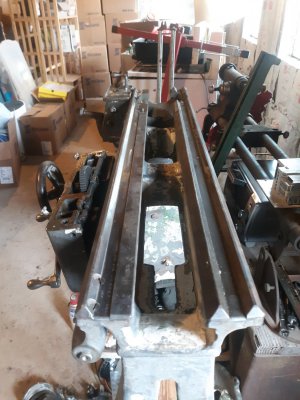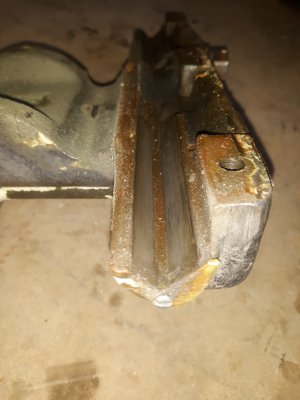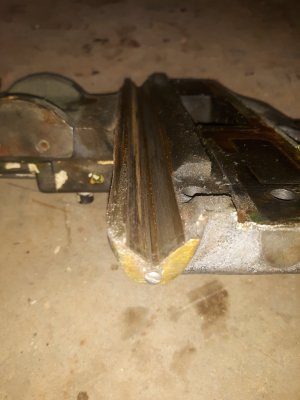- Joined
- Dec 25, 2023
- Messages
- 94
@matthewsx , thanks for the suggestion. I had planned to bolt the base to the cart with 3/8x2" lag screws, or even bolts with nuts on the bottom, but haven't yet done it. At 900-some-odd pounds, I don't see it 'slipping' anywhere. And considering the base is only 20" square with the wheels directly below it (to prevent leverage cracking by outriggering the wheels), there really isn't a whole lot of unsupported span. The beam from the main frame to the front legs is really only to keep the one under the legs located securely to the cart, it doesn't impart any real support.
@gard , I'll put a handle on the cart to wheel it around, good idea.
This is not a long-term solution- as I said, this doesn't make it useful to work *at* the lathe, but allows me to work *on* the lathe, until it finds a place to live.
@gard , I'll put a handle on the cart to wheel it around, good idea.
This is not a long-term solution- as I said, this doesn't make it useful to work *at* the lathe, but allows me to work *on* the lathe, until it finds a place to live.



